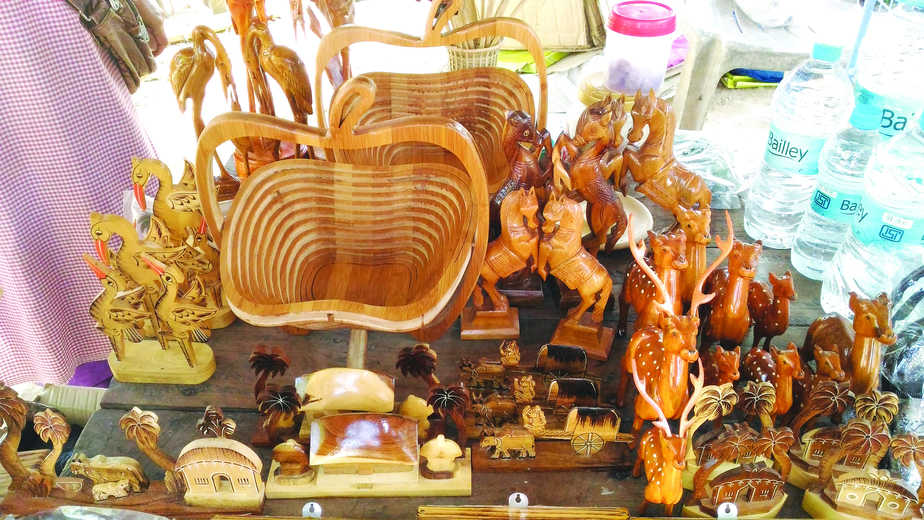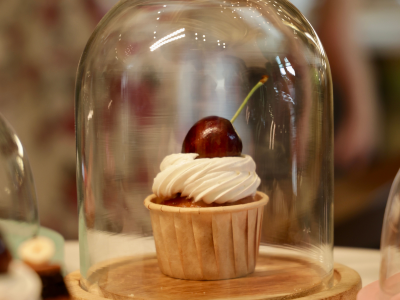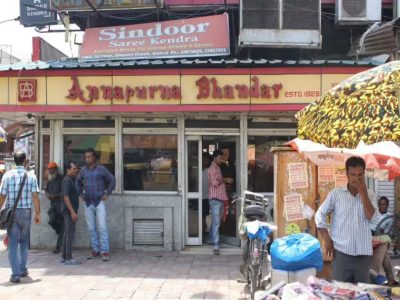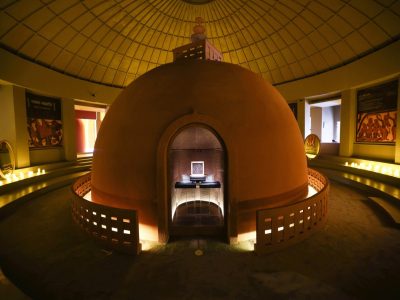Cherry blossoms, fashionistas, living root bridges and the cleanest village in Asia — a tour of the state is a lesson in living life in sync with your surroundings
The road to Shillong is pink — rich with blooming pink cherry blossom trees at every curve. It is the time of year when the slightly chilly winds create magic. Green hills roll by, somewhere a water body shines and then we find ourselves on the jammed outskirts of Shillong, Meghalaya’s capital.
As the SUV crawls through, I observe the peach-skinned women. No wonder it’s been called the fashion capital of the country, I thought to myself, seeing the women in their long boots, well-fitted skirts and jeans, lips shining in different colours. This is like a ramp. Imagine people go to the shows to watch all those models, my brain is buzzing with city styles. The state is beautiful in all ways.
The hotel is located in the centre of town and I walk around to find some local, organic spices and cookies. It’s not very expensive either. I get some cookies and a juice. Then we are off to explore the green state.
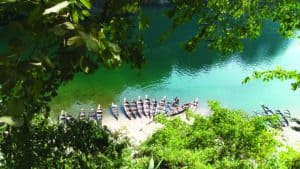
The morning sun is dancing and the drive is even greener as you go deeper within the state. Less human faces, more plants and flowers. It could be the paradise that we perceive in our heads. Our destination is Dawki Lake, situated at the border of India and Bangladesh. This crystal-clear water body is actually the division between the two countries, I am surprised to learn. A loud noise shuffles through the breeze. It is Friday and the people in Bangladesh are celebrating their holiday.
The lake shimmers like an emerald. The bottom completely visible and the mountains on the side almost like an imposing wall. We are happy to take a boat ride. There is an island of sorts within the lake where a tea stall is located. While we didn’t have the tea, we did get off on the sandy shores of this little bit of land.
The waves ripple, the shades of green keeping changing as the rays flit over the water. If only the human hand could capture this play of light and water. We follow the noise and go close to see the holidaymakers on the other side. But the boatman warns that we can’t go closer as the security is on alert for invaders. An old fisherwoman in her boat and a few dead branches around her indicate the border. The boatman doesn’t slow down; his clear strokes create ripples in the clean water. He turns the boat back to the shore to send us to the cleanest village in Asia–Mawlynnong.
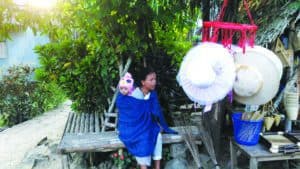
It’s been a long, sunny morning or should I say the greenest morning possible. The stomach is searching for food. After about an hour’s drive through the curves, we are on a driveway of sorts, as it is lined with bamboo dustbins. Flowers and trees, the village is silent and disciplined. We see no hut, no runaway dog or child, and reached a parking lot.
Here, we are greeted by souvenir shops. No one is pressurising you to buy. They sit and watch as you browse through the jewelry, the organic jams, the mats, the tribal masks and more. The prices are clearly written on each item and the villagers don’t like to bargain.
Flowers and trees grow all around. In between the clearings are bamboo huts. The village is home to around 90 families. The main sources of livelihood are agriculture and tourism. We see mostly women around the shops and in the one restaurant in the centre where visitors can eat their organic meals. This is fresh and home-cooked. This is the land of no cheating and sticking to your word. Everyone works honestly and expects to be paid honestly. Dessert is yum pineapple, freshly cut. They even offer slices of kiwi.
This is a place to enjoy the sunshine, sleep in the shades of the trees and just be with nature. There are no horns here. There is a signboard with do’s and don’ts for the tourists. Do follow or you just might be chastised by the locals. Trash throwing is strictly forbidden.
As it is located about 90 km from Shillong, the village is visited by many schools. I see a group arriving as I sit in a corner, observing the community. My gaze goes over the pristine East Khasi Hills and the women who never frown. How do they manage this?
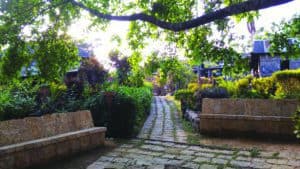
There are green zig-zag paths all around. I would have loved to see a home, but I didn’t dare ask for fear of offending. There are spotless front yards. The bamboo stilt houses look like little fairy homes to me. Bamboo dustbins are placed across the entire village. Once full, these are then put into compost pit and used as manure. Polythene and smoking are a strict no-no.
The public toilets for the tourists are maintained by the villagers themselves. Every evening a brigade does the cleaning which includes weeding, sweeping and picking up any trash. Children also partake in this activity from an early age. Should anyone not take onus of the trash lying around, then the discoverer himself puts it in the trash bin. The water supply system is as efficient as is the sanitation system.
I wish I could have lingered there far longer ,for there is a tower on the eastern side of the village which offers a spectacular view of the Bangladesh plains, I was told. There are many unmapped trails, little waterfalls and sacred forests with flora and fauna. Wouldn’t I want to explore this piece of clean paradise for more days? I would, but maybe another visit for now the cars are headed towards another natural miracle—the living root bridge in the neighbouring village of Riwai.
Right on the outskirts, these are over 200 years old. This one was constructed by tying the roots of two banyan trees. As the roots grew and tied themselves around each other, they created a passage over the stream. Parking the cars, we enjoyed some more fresh pineapple. It’s so easily available here and doesn’t taste anything like the one you get in Delhi. This is sweet and the packet has a bit of salt. Little wonder, the people have such good skin. The woman selling these has tied her little one in a cloth sling. He smiles as we eat and she handles him with ease.
Walking down a marked pathway, we reach the ticket point. Yes, walking on the bridge is an activity you pay for. It’s a slippery path with stairs cut on the rocks, nothing here is man-made. The bridge is breathtaking, perhaps a little scary during the dark hours. But the villagers walk over without fear. I stand for a while, gazing at these surreal surroundings. I could have been in Enid Blyton’s magic faraway tree. Only the elves and fairies were missing. All too soon, the sun begins its downward journey. The evening breeze demands we head back to the coziness of the hotel in vibrant Shillong.
LOGISTICS
Where to stay in Mawlynnong
While one can stay in Shillong and see the area around in a day, but a real experience would to stay in the guest houses built on stilts in the village.
How to reach
The nearest airport is Guwahati, Assam, which is a three-hour drive from Shillong. The village is another three hours drive from there.
Mawlynnong facts
Agriculture is the main occupation and betel nut is the main crop.
Community is Khasi. The youngest daughter keeps the mother’s surname. The property and wealth are also passed to her.
In Shillong
The main shopping area is Police Bazaar. This is famous for boots and momos. But we had some yum Delhi food here–katori chaat, samosa chaat, chamcham and cutting chai. All good restaurants and bars are also here.

